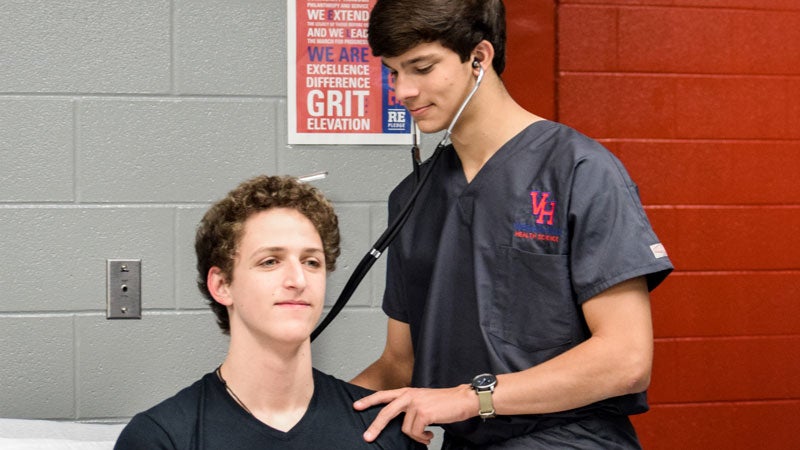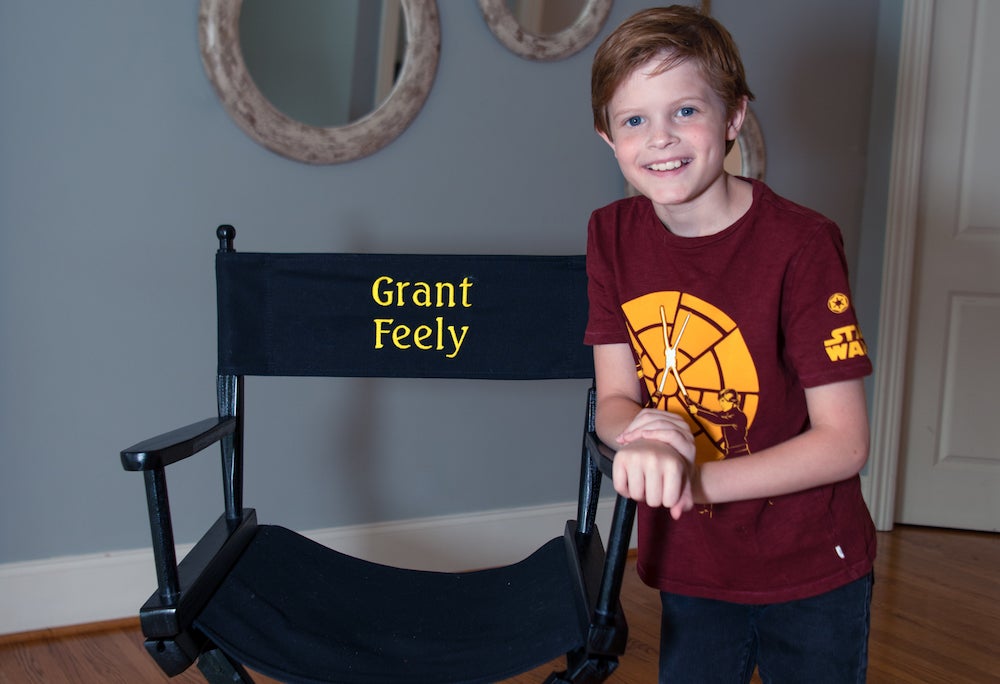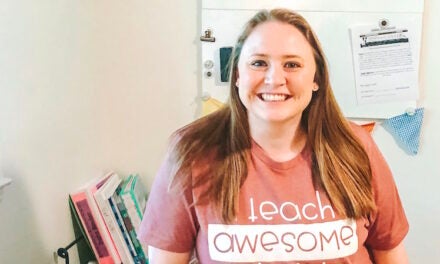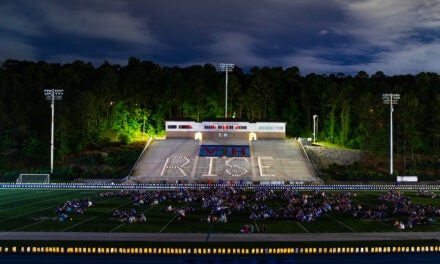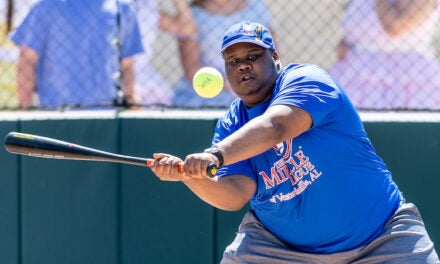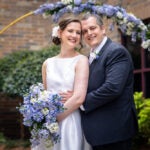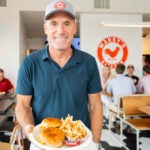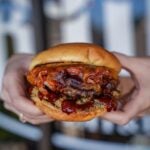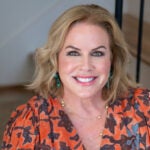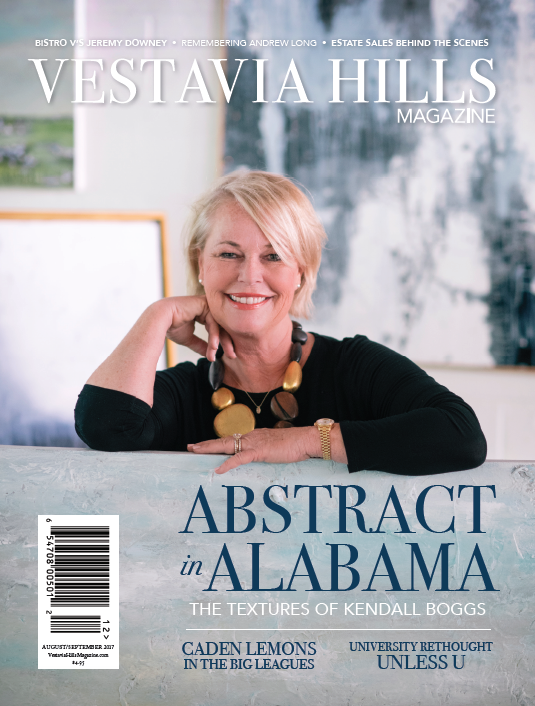For most of us, thinking back on high school classrooms tends to evoke certain imagery: desks, textbooks, lectures, chalk or marker boards, Scantrons and the dreaded group project. But classroom of Hannah Peterson, better known as Coach P., looks different.
In a room near the Vestavia Hills High School’s gym, you’ll find her sports medicine lab. One wall is setup like a physical therapy clinic with all the bands and balls and tables used for therapy, and one wall looks like a hospital room with two beds and medical equipment. In those beds sit two teaching manikins: Rescue Randy, who despite his small stature weighs 250 pounds, and Nursing Ann, who has vitals and a microphone so she acts as a “live” patient.”
It’s all the stage of the sports medicine program Hannah started at the school three years ago—the space that is sparking passion in students like rising senior Luke Byrd.
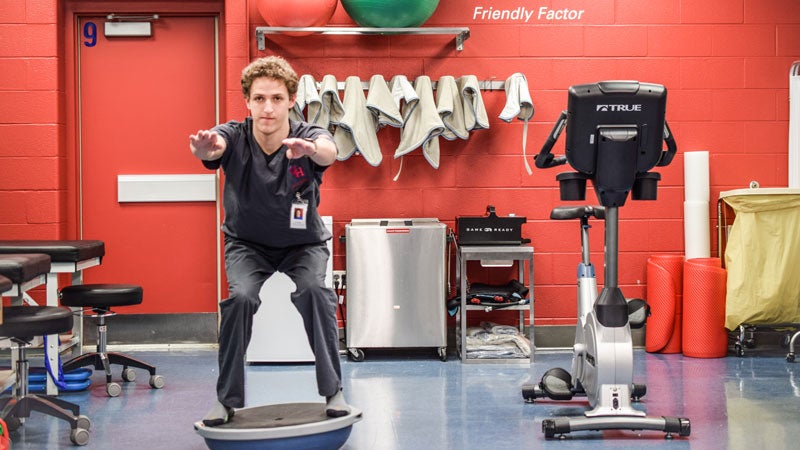 “I have seen his outlook on his future change drastically, and I think it has to do with credit to (Hannah) because she is involved in engaging the students,” Luke’s mom Donna says. “She has lit a fire for my son and helped him develop a love and an interest in the health sciences, and he’s interested in going to medical school. He would have never gone that route had he not taken classes with Coach Peterson. “
“I have seen his outlook on his future change drastically, and I think it has to do with credit to (Hannah) because she is involved in engaging the students,” Luke’s mom Donna says. “She has lit a fire for my son and helped him develop a love and an interest in the health sciences, and he’s interested in going to medical school. He would have never gone that route had he not taken classes with Coach Peterson. “
Rather than learning about just the academic side of biology or chemistry, students in this program see their applications in the real world. And that tends to breed excitement and motivation in this class and others since students realize they need to excel in school with a professional goal in mind. “It speaks a lot to them that they choose to fill their elective with something that is challenging and that they do have to study for,” Hannah says.
The program starts students’ sophomore year with a Foundations in Health Sciences course. From there they can focus on sports medicine the next two years, or soon there will be a nursing track for those two years that’s also an option. By the spring of their senior year, they are ready for a clinical internship.
That first year they learned the basics of body systems, the history of health care and information about health care career paths, along with plenty of games, activities and educational field trips. By their second year they are learning how to assess and evaluate injuries and to tape patients.
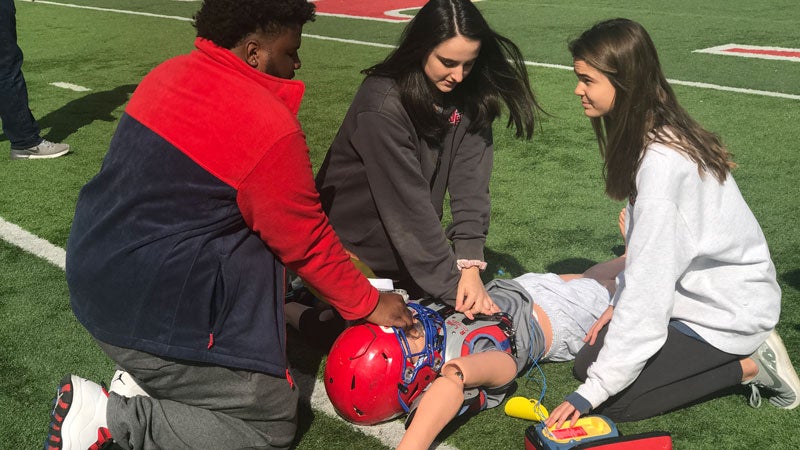 One day the second-year students’ assignment sent them out to the football field to find the Rescue Randy manikin laying on the field like with a helmet and football pads just like an injured athlete. Given the scenario Randy was facing that Hannah read to them, the students had to create and implement an emergency action plan. Afterward they got in a circle and reflected on what went well and what they could do better in the future. The students immediately wanted to do another test case afterward. “It’s exciting to them, and it sticks,” Hannah says.
One day the second-year students’ assignment sent them out to the football field to find the Rescue Randy manikin laying on the field like with a helmet and football pads just like an injured athlete. Given the scenario Randy was facing that Hannah read to them, the students had to create and implement an emergency action plan. Afterward they got in a circle and reflected on what went well and what they could do better in the future. The students immediately wanted to do another test case afterward. “It’s exciting to them, and it sticks,” Hannah says.
In their third year, students hone in on their professional skillset, reviewing injury evaluation and return-to-play decisions as well as therapy skills. Often Hannah plays the injured athlete and students have to treat her. “They were super excited when they got it right. You could see them wear it on their face for a few days,” Hannah says. They also got to examine some “real” patients who came into the lab, which ATI Physical Therapy also staffs part-time, thinking through, for example, what a patient did on a normal day that contributes to general knee pain from an IT band injury she had in college.
And then with their new Vestavia Hills scrubs ready to help with look and feel the part, the students embark on a clinical internship after the Christmas holidays, with 12 weeks of observation and interaction. This year, the first of the internship, those took place with two weeks each at two orthopedic clinics, one operative and one non-operative, as well as two physical therapy clinics and a dentist’s office. It all allowed the students to get a better feel for the areas of medicine they like and are interested in pursuing a career in.
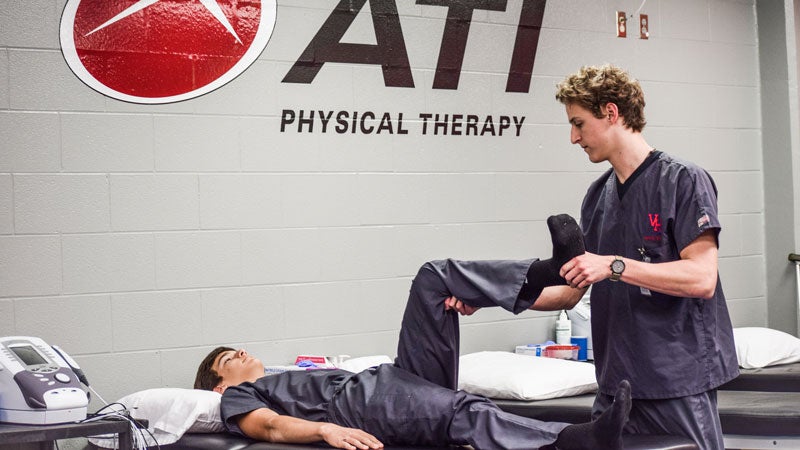 What stood out the most from the experience for the three students who pioneered it this year? For Ian Schultz it was performing speeds test for a form of tendinitis with a fellow at orthopedic clinic. For Chris Novellino it was seeing non-operative ultrasounds on arthritic patients and how the doctor would shoot with them a “WD-40 shot” to lubricate their joints in their knees as he watched it appear on the ultrasound screen. “It was gross and cool at the same time,” he says. And for Caroline Tinsley it watching ACL reconstruction surgery. “It was really interesting,” she recalls. “I knew what parts they were talking about. It was cool to know what they were doing.”
What stood out the most from the experience for the three students who pioneered it this year? For Ian Schultz it was performing speeds test for a form of tendinitis with a fellow at orthopedic clinic. For Chris Novellino it was seeing non-operative ultrasounds on arthritic patients and how the doctor would shoot with them a “WD-40 shot” to lubricate their joints in their knees as he watched it appear on the ultrasound screen. “It was gross and cool at the same time,” he says. And for Caroline Tinsley it watching ACL reconstruction surgery. “It was really interesting,” she recalls. “I knew what parts they were talking about. It was cool to know what they were doing.”
And just like Hannah intended, the experiences helped them clarify their future career paths.
“Seeing what you do in the internship firsthand you can’t get from just learning about it,” Ian says. Ian and Chris, who are heading to Auburn next year, now know they want to go to medical school, and Ian has the pediatric neurosurgery specifically in mind. Samford-bound Caroline sees herself going to nursing school.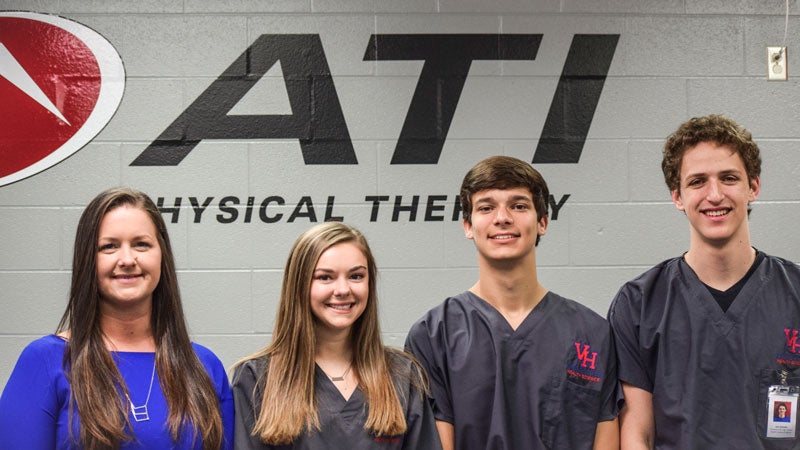
The students also found that the professionals they interacted with said they wish THEY had had a hands-on health care experience like this in high school instead of waiting until late in their college careers to do so. Those professionals took note of the students too. “The best feedback we have gotten is that our high school students are right on par with college students both in content knowledge and personal skills—being on time, communicating with patients, asking great questions,” Hannah says.
Jeff Dugas, an orthopedic surgeon at Andrews Sports Medicine & Orthopedics Center at St. Vincent’s who hosted all three interns, is quick to sing the praises of this year’s students. “These are all really sharp kids with a reasonable sense of direction in where they want to be with medical professions,” Jeff says. “They asked good questions. (It’s impressive for) a 17 year old to speak a language they don’t know yet—the language of medicine. Several interacted with patients and talked with them about experiences. That’s a level of maturity you don’t often see in high school students.”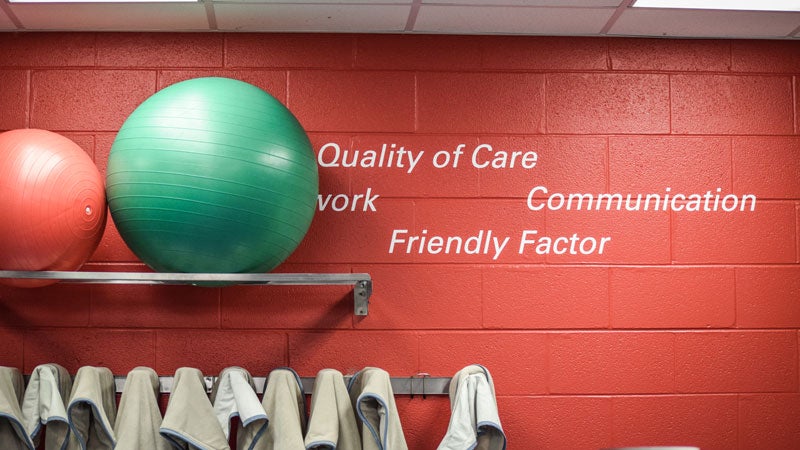
Jeff firmly supports student exposure to the ins and outs of medicine—dealing with patients, administrative matters and paperwork, delivery of good and bad news, work-life balance—at such a young age to help get a feel for if they want to start on the long road to medical practice. “The more you get exposed to it if you realize it’s not for you, you save a lot of heartache and trouble, so the earlier you can expose yourself to it the better,” he says. “Being a physician is a calling. You can’t do it for anything other than the love of the work.
And the students don’t have to wait to apply their know-how either. Ian now enters a weight room with a different mindset know that he has an enhanced understanding of proper form and how injuries can happen. Caroline, who takes and teaches dance at Dale Serrano Dance Studios, says she now knows good ways to stretch certain muscles so she doesn’t get injured when she dances. Chris, who plays on the soccer team, has been called upon to tape his teammates’ ankles. “You are in that doctor class,” they will remind him.
But more than anything the students who continue in the program tap an area of passion that they enjoy. “I like that it’s geared toward what I am going to be dedicating the next 10 or so years of my life learning,” Chris says. “It’s preparing me for my future occupation and education from here on out. If I am spending time studying, I want it to mean something. That’s what we do in here.”
And that’s a delight for Hannah too. “For me as a teacher and athletic trainer I feel blessed to get to teach what I am most passionate about it, and it’s exciting to teach classes that people want to take,” she says. “I can really push them and challenge them and stretch them in ways I couldn’t if they were forced to be there.”
HOSA Stars
Many of the health sciences students participate in the Health Occupations Students of America, a student-led club at VHHS. In November nine students qualified for state competition in areas such as sports medicine, forensics, physical therapy and medical spelling. Senior Ian Schultz placed first for sports medicine, and juniors Aaron Bard and Luke Byrd first place for forensics. All three of them will compete at international level this summer, and Luke and Aaron are hoping to beat out their second-place finish international finish from last year.

